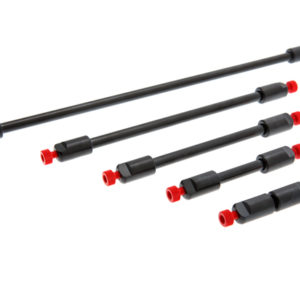
Shop
CERI L-Column ODS-P*
L-column ODS-P is ideal for the analysis of proteins and peptides. The base silica has a pore diameter of 300 Å. Adsorption is minimized and proteins and peptides elute with sharp peaks. Biological samples are often analyzed using 1% TFA in the mobile phase and L-column ODS-P is exceptionally stable in the strongly acidic mobile phase.
Ordering Information
| Inner diameter (mm) | Length (mm) | Particle size (5μm) Catalog no. |
| 1.5 | 50 | IU-612137 |
| 1.5 | 100 | IU-612167 |
| 1.5 | 150 | IU-612017 |
| 2.1 | 35 | IU-612247 |
| 2.1 | 50 | IU-612147 |
| 2.1 | 100 | IU-612177 |
| 2.1 | 150 | IU-612027 |
| 2.1 | 250 | IU-612227 |
| 3.0 | 150 | IU-622267 |
| 3.0 | 250 | IU-622327 |
| 4.6 | 35 | IU-622257 |
| 4.6 | 50 | IU-622157 |
| 4.6 | 100 | IU-622187 |
| 4.6 | 150 | IU-622077 |
| 4.6 | 250 | IU-622087 |
Description
CERI L-Column ODS-P*
In 1990, L-column ODS was introduced as a column whose secondary interaction with the residual silanol groups was eliminated by a new end-capping method* using high-temperature silylation. At the time, the performance of L-column ODS was far superior to that of existing C18 columns, and it became a pioneer of the new-generation end-capping method.
Bonded phase: C18 (Octadecyl)
End-capping: Yes
USP category: L1
Range of pH: pH 2 – pH 9

Additional Information
| Particle Size | 5μm |
|---|---|
| Length | 35, 50, 100, 150, 250 |
| Internal Diameter | 1.5, 2.1, 3.0, 4.6 |
| Pore Size | 300Å |





